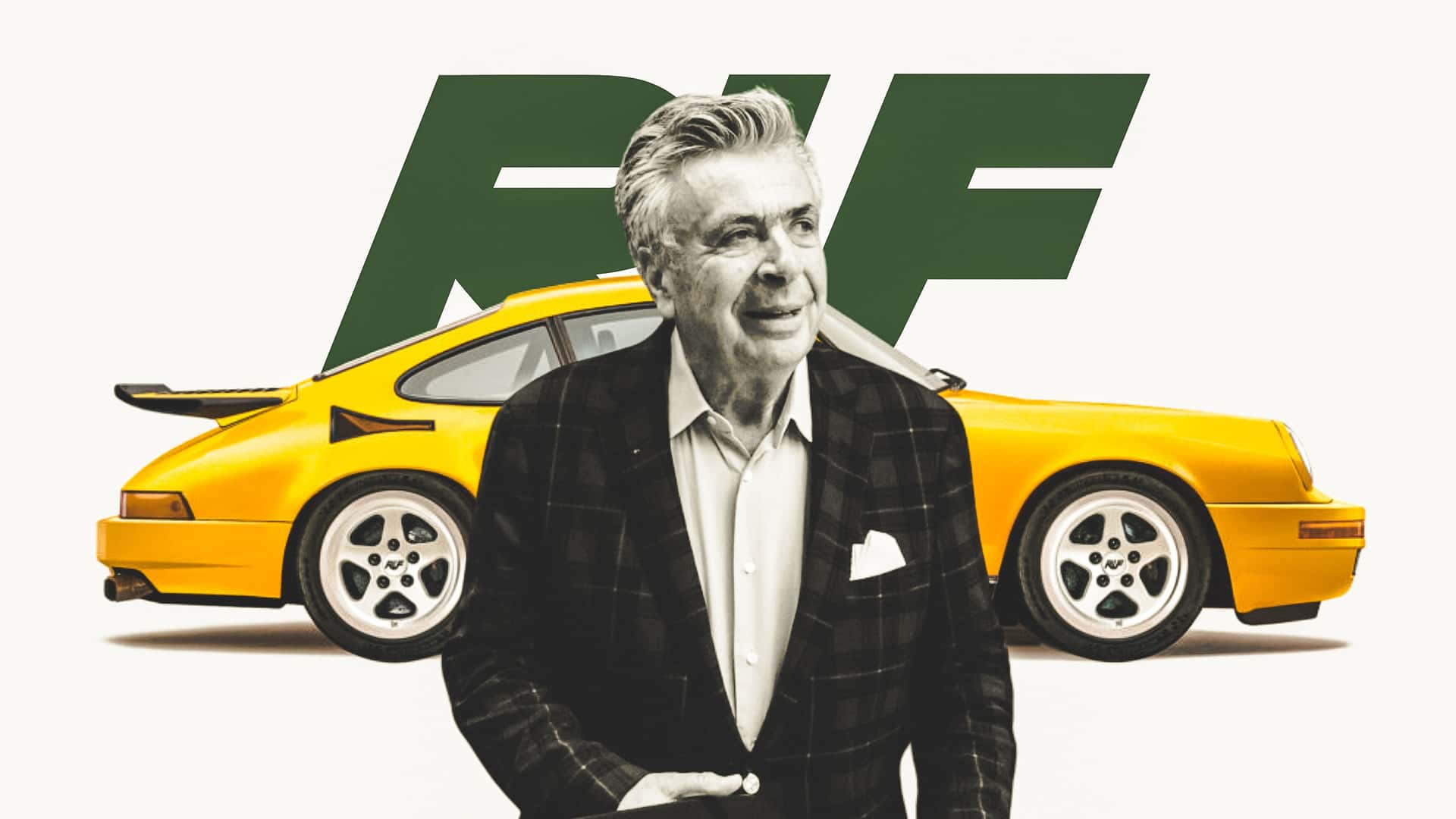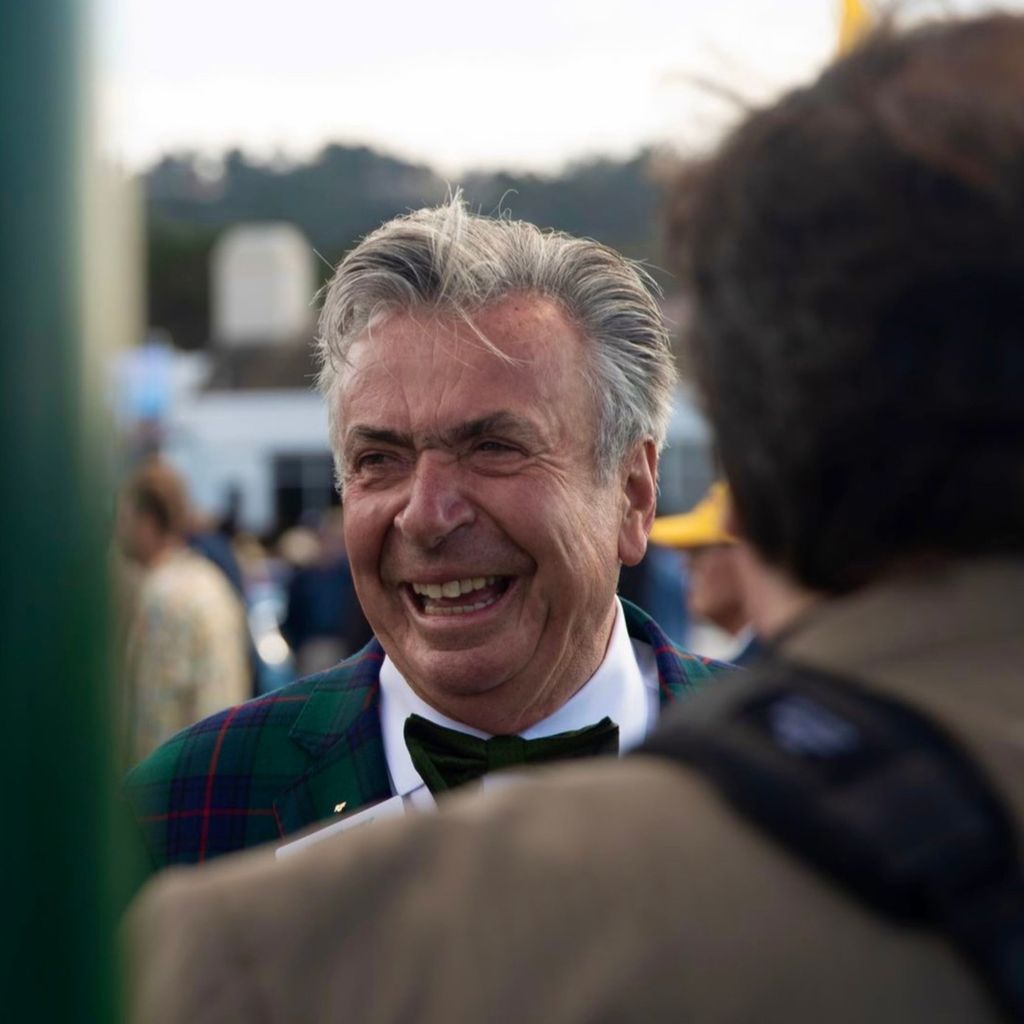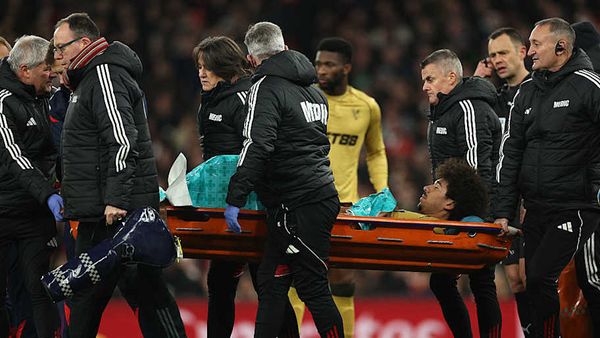
His cars may look like the past, but peek under the skin of a Ruf automobile and you’ll see it—the vision of a man who’s always looked forward.
Alois Ruf Jr. released the firm’s first completely retuned model in 1977, a 911 Turbo with a punched-out engine for ‘Bahn-bending performance. Then came an in-house five-speed fitted to remedy the Turbo’s Achilles heel. And later, that famous top-speed test for Road & Track magazine, when a Ruf edged past 300 kilometers per hour—beating the likes of Ferrari, Lamborghini, and Porsche themselves—and entered the history books.
But that’s only the origin story.
In the 2000s, Ruf recognized an opportunity to break from building his cars on Porsche bodies-in-white. He saw a chance to build vehicles that borrowed Stuttgart’s design language, but were wholly original under the skin.
In a wide-ranging conversation with Alois Ruf Jr., we covered that first breakthrough moment for the turbocharged Ruf, the brand’s early experiments in composite structures (and even EVs), and what the future holds for Germany’s most endearing family-run manufacturer.
What follows is a Q&A between Alois Rüf and Motor1, lightly edited for clarity, organization, and continuity.

Kyle Kinard, Motor1: That first magazine test in 1984 put Ruf on the map with a 300 kph run, even before the Yellowbird returned and topped 200 mph. Tell me a bit about that test, what it did for the company?
Alois Ruf Jr., Ruf Automobile: I drove the car to the test myself, and I brought two extra tires mounted on wheels with me. I had them inside the car. I couldn't have a passenger because I was filled up with those two wheels. Those two tires, they were from Dunlop.
Dunlop had them on test equipment to make sure they would do over 300 kilometers per hour. Because in 1984, there was no tire manufacturer that guaranteed that speed. It was the most difficult thing at the time; the sound barrier was that speed of 300 kilometers.
Dunlop shaved the tires so they had less centrifugal force with the profile. They were on the drum for over two hours, and they had no problem.
Motor1: So you showed up in your own car with its own tires. When you got there, you weren’t the only car at the test, right?
Ruf: While I drove my car up myself, the other company that came with two young people, a young couple came, that was from the Porsche Press Department. They brought the Turbo 930, and they were not aware of what kind of a significant event that was, obviously.
And their car did 254 kilometers per hour, so there was a big difference—over 50 kilometers of difference.
Motor1: But your car didn’t just dust Porsche, right? It dusted everyone.
Ruf: Ferrari denied to come because they were between the 512 BB and Testarossa, that's my speculation. So the Ferrari Club President of Germany brought his 512 carbureted version, the BB, and that car was doing quite well. It did 284 kmh, and then there was Valentino Balboni from Lamborghini was there. He brought the Countach, did 277, and so those were the numbers.
Motor1: So you beat everyone, and put 50 kph on a factory car from Porsche.
Ruf: Yeah, that was the very first event, and that really put us on the map, especially in the English-speaking part of the world.
Motor1: I wanted your take on the concept because your cars kept breaking once-impossible barriers… but I don’t think younger readers understand how important top speed was to enthusiasts back in the day. Why was that?
Ruf: Well, I think the high speed at that time mattered because, especially Americans, come from a country with a severe speed limitation with the speed limit of 55 miles per hour at the time, which happened after the energy crisis.
It’s such a vast place with such long distances, and you have that type of a speed limit. Of course, now it has been softened, and everybody runs 70 to 80 miles per hour, which is much better, of course. But people love the fast cars and love the potential of the fast.

So if you want to call it the times when no alcohol could be used, what is called the prohibition in America, suddenly everybody was raving off the best wines and best whiskeys, you know?
Motor1: As an American, that makes total sense.
But let’s jump ahead, because you had all that success with the Yellowbird, but at some point, you broke from building cars on Porsche bodies and started from scratch. Why’d you do that?
Ruf: First, I have to explain that since 1981, we are a full car manufacturer… and so little by little, we became more and more our own standalone manufacturer, and bespoke manufacturer. And when the CTR3 happened, it was the first car that received our own silhouette.
But the platform of the car and the nose of the car were still a 997. We used the nose of the 997 for the approved crash structure. And then from the center of the car, we grew out our own tubular frame, a birdcage frame, that was holding the whole drive frame in the back and the new rear axle. So this is how the CTR3 came about.
Motor1: But now you build original cars from the ground up, without Porsche parts.
Ruf: And now with the CTR Anniversary we did for the Yellowbird 35 years later, that was the car that had a completely new chassis. Although it looks again like a Porsche 911 at first glance, that car is from the ground up with completely new bones. New axles, new suspension, double wishbones, front metal subframe, rear metal subframe, and the roll cage.
And over the whole car goes a skin and carbon, and the most important part is the monocoque in carbon. So this is the first carbon monocoque, yeah, 911-shaped car. The design is different.
In every corner of the car, you find different designs. You cannot replace anything with another Porsche part because it's all our own.
Motor1: Was there ever a conversation about deviating from the classic Porsche shape, since you eventually had the ability to build a complete carbon monocoque from scratch? Or is that shape so intertwined with Ruf, it always has to look like a classic 911?
Ruf: You just said it in the last phrase. It has to always look like the original, beautiful 911, but it can be modernized.

When you look at our car and somebody hits the stop light, and you see the third brake light, the way it's built into the Ruf, you know it's a modern car. Because these are the accents of a modern car, and you will see that if you look at the taillights, the taillights are bigger, they have all the LED elements in them.
You know this is not retro and this is not old, it is something new. But the beauty of the original 911 shape has been preserved and will stay there. And we stay this way. This car is good forever.
Motor1: Digging through the archives, while you were developing composites and tech for that first CTR3, I also found something super interesting. Ruf built maybe the first performance EV in 2008!
Ruf: Yeah, I hope at that time nobody used the word EV, but we were front runners, if you wanna say so.
We were not motivated like the auto industry is today, because there's a lot of politics in that game. At that time, we wanted to do an EV because I'm also in the hydroelectric world, and we have three power plants. They are all running with hydro power. And a friend from California who came to visit—an electrical engineer— we were chit chatting over a dinner and said, ‘Wouldn't it be great if we could have a vehicle that would take the green power out of this power plant and then run on the road?’
Then he convinced me that it could be done, and then we made a bet. We built a car with 80.0 kilowatt hours of energy, and we were running at 350 kilometers radius. And that was very good. That was driven in Los Angeles, the first prototype. And with the stop-and-go traffic of Los Angeles, it worked very well because we were recuperating very well.
But when you bring the car to Germany on the Autobahn and you have to drive to Munich, and you want to drive it like a Porsche or like a Ruf, you wouldn't even make it to Munich.
So I knew about the limitations, and it's a written law by natural science that batteries become better and better. I understand that, and they will become even better.
But I personally think that as long as they don't grow on a tree, it will be difficult to continue building these batteries for all the cars in the world.
Motor1: So we shouldn’t expect a Ruf EV?
Ruf: It was just an idea. It was a trial, and it was an experience for us, and I wouldn't want to miss it.

Motor1: What do you see as the future of Ruf for the next decade? What are the challenges you’ll overcome?
Ruf: I have no worries. We stay thermodynamic, and we will continue that. This is what our customer wants, and when the world goes more
electric and more electric, there will always be a small niche for us.
Because we are a small volume manufacturer, we can still build thermodynamic engines, combustion engines.
And I believe also in the new fuel concept that Porsche started. I think the synthetic fuel is a good way to go for the future.
Motor1: Have you run any of that on your cars just to test?
Ruf: We have. We even drove in Le Mans for testing on our CTR anniversary. We ran it with synthetic fuel. Yeah, and everything passed with flying colors. There, it was no different than running everything conventionally.
Motor1: I read that you’re scaling up to build something like 30 or 35 cars per year right now. Does that keep you in a safe pocket as a smaller manufacturer, selling enough to weather the current legislative unease, but small enough to avoid the most stringent emissions laws?
Ruf: Yes. Unless the whole world goes upside down completely [he laughs], I hope this is not going to happen.
When you come to Germany, give us a visit. We’ll show you around the future of Ruf.








